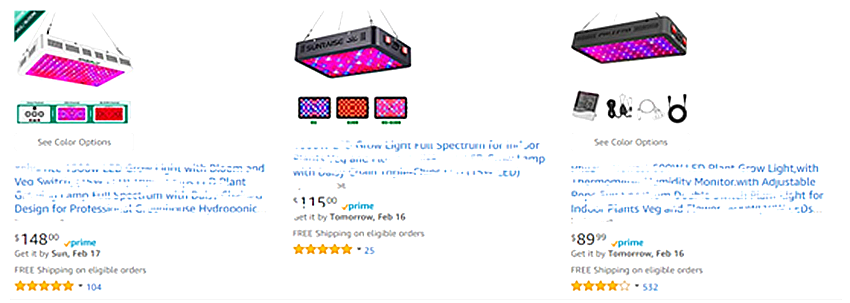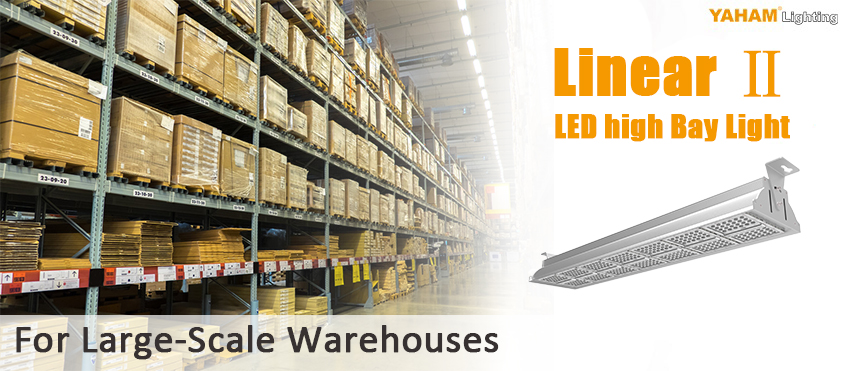Factory lighting not only needs to meet the illumination needs of different industrial sectors, but also guarantees long-lifetime and durability of luminaires, while saving energy. The most important thing is to ensure the efficiency of employees. Appropriate lighting effects not only help to motivate employees, but also prevent the fatigue of employees, maintain the health of employees and prevent work-related accidents. Appropriate lighting effects need to be comprehensively evaluated in terms of visual execution, visual comfort and visual atmosphere.
Assessment Content
|
Lighting Factors
|
Impact On Industrial Production
|
Visual execution
|
Illuminance and glare
|
Operating sensitivity and accuracy
|
Visual comfort
|
Light Uniformity and CRI
|
Employees' work comfort, mental concentration and work efficiency
|
Visual ambience
|
The direction of the light, the layout of the luminaire and the color temperature
|
Employees’ mood, attention and safety
|
In the industrial filed, the ergonomic quality of the workplace is critically dependent on the ease with which various visual tasks can be performed. Good lighting can have a positive impact on other productivity determinants (implementation, mistakes, accidents). In a pleasant indoor environment, a good line of sight and a comfortable feeling can better motivate employees, make them more focused and efficient. In this way, the quality of the work will increase and the number of errors will be significantly reduced. The risk of accidents is also reduced.
Good lighting can lead to higher job satisfaction and thus a positive impact on health: the prevalence is greatly reduced. Good lighting can also produce more fruitful results, not just to maintain health, but also actively promote long-term good attitudes.
On the other hand, factory lighting will vary depending on the operating department and the content of the work. Lighting methods can be divided into: general lighting, local lighting, hybrid lighting and accent lighting.
Lighting method
|
Definition
|
General lighting
|
Uniform illumination set to illuminate the entire location.
|
Local lighting
|
Designing a different illuminance for a particular area, such as the place where the work is done, to illuminate the general illumination of the area.
|
Hybrid lighting
|
Illumination for a particular visual work to illuminate a part.
|
Accent lighting
|
Illumination consisting of general lighting and local lighting.
|
Corresponding lighting arrangements for different needs can greatly improve work efficiency and safety while effectively saving energy.
In order to use natural light more efficiently and maximize energy savings at specific times and unmanned states, factory lighting can also be combined with intelligent control modules to control illumination by sensing the illumination of the surrounding environment and the activities of people.
Due to different industries and production environments, the illuminance standards of the factory are also different, and there are different requirements for luminaires.
1. The general industrial environment is 100~500 lux, and the precision manufacturing environment is generally 500~1000 lux. In the electrical engineering industry, inspection and measurement operations require 1500 lux illumination to ensure safe and accurate operation.
2. Heavy industry generally requires luminaires with high protection level (IP65 and above), explosion-proof and high temperature resistance and corrosion resistance.
3. The printing industry requires CRI>90.
4. The food processing industry requires CRI>80 and ISF certification.
5.Plastic processing, wood products manufacturing, chemical industry are required to have explosion-proof characteristics.
For factory lighting, only the illuminance standard value is not perfect, and vertical illumination, illuminance uniformity and brightness balance should be fully considered according to the characteristics of the actual operation.
• Vertical illumination
The illuminance values specified by the standard are mostly horizontal illuminance. In industrial production, many visual tasks are performed on the vertical (tilted) surface, so not only the horizontal illuminance (Eh) of the working surface but also the vertical illuminance (Ev) is guaranteed. In general, the ideal Ev/Eh ratio is 1:3; and when the visual task is mainly completed in the vertical plane, the ratio of Ev/Eh is preferably 1:1 or more. An effective way to increase the vertical illumination is to add local illumination to the vertical work surface, it is also possible to use a wide light distribution luminaire in general lighting because it provides better vertical illumination.
• Illumination uniformity
This is an important indicator for improving visual satisfaction and reducing eye fatigue. The national standard clearly stipulates that the general illumination illuminance uniformity in the working area should not be less than 0.7, and the uniformity of illumination around the working surface should not be less than 0.5. The illuminance value of the general illumination of the channel and non-working area should not be lower than 1/3 of the general illumination illuminance value of the working area. An effective way to improve the uniformity of illumination is to correctly select the light distribution of the luminaire. For the general illumination of most standard buildings, such as large equipment without large scale, the proper choice of wide light distribution is the most convenient and effective choice.
• Brightness balance
The ultimate goal of improving the uniformity of illumination is to achieve a good balance of brightness, the illumination is perceived by the human eye as the reflection of the surface of each substance in the work area, that is, brightness.
Under the balanced brightness, the human eye feels comfortable and does not fatigue due to the constant adjustment of the pupil. On the other hand, the resolution of the details of the working object requires a strong contrast of brightness between the details and the background. Therefore, adjusting and selecting the brightness contrast of the field of view for special job requirements is a problem that factory lighting needs to solve in depth.
Choosing the right luminaire for different industry needs can effectively ensure work efficiency and safety.
Yaham Lighting is is a provider of industrial lighting system solutions, we independently develops and produces high efficacy high bay light (190lm/W) , low glare high bay light (UGR<19), high temperature high bay light (working temperature up to 85 °C). We also provide our customers with independent research and development of intelligent control system based on PLC(Power Line Connect) technology. Yaham Lighting provides high quality, stable and reliable, energy-saving and intelligent lighting for factories all over the world.








